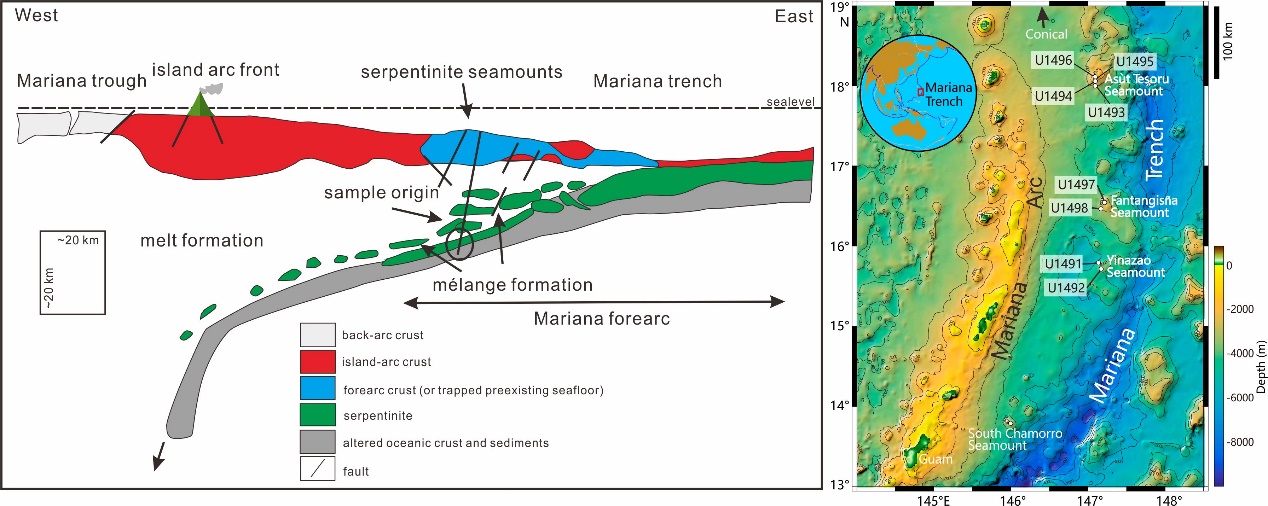A research team led by Prof. SUN Weidong from the Institute of Oceanology of the Chinese Academy of Sciences (IOCAS) has revealed the fluid-rock interactions at shallow subduction zone from Mariana Forearc.
The study was published in Lithos on May 13. It is a combined study of petrography, mineral chemistry, and B isotopes in the metabasite rocks recovered from Fantangisna and Asut Tesoru Seamounts during the recent International Ocean Discovery Program (IODP) Expedition 366.
The main objectives are to reveal the processes of dehydration and fluid-rock interactions in the Mariana forearc zone and to contribute to an overall understanding of the B cycle in the shallow subduction zone.
Subduction zones have a crucial role in mediating global element cycling and maintaining the Earth's geochemical mass balances. Fluid pathways may also exist within the forearc and play an important role in the element cycling and geochemical mass balance at subduction zones.
The researchers found that the metabasites from Fantangisna and Asut Tesoru Seamounts consisted mainly of low-temperature alteration minerals, corresponding to zeolite- to prehnite-pumpellyite-facies metamorphism. The metamorphic minerals are enriched in fluid mobile elements (e.g., B, As, Sb, Pb), thus fixing the B concentrations of the subducted oceanic crust during shallow subduction (
"In addition, from Fantangisna through Asut Tesoru to South Chamorro Seamounts, the δ11B values of the metabasites generally show a decreasing trend, which was most likely caused by prograde metamorphic dehydration," said LIU Haiyang, first author of the study.
The dehydration modeling results suggest that gradual prograde metamorphism dehydration can generally account for the B isotopic signatures of Mariana arc lavas. Fluids released from sediments of the subducted slab beneath the forearc are characterized by lower δ11B values.
Thus, the forearc mantle is an important filter for B systematics across-strike in subduction zones, one that results in an overall heavy B signature in Mariana arc lavas. However, the different B isotope compositions of two groups of Mariana arc lavas are largely controlled by the variable sediment/altered oceanic crust (AOC) ratios caused by the subduction of Magellan seamounts.







